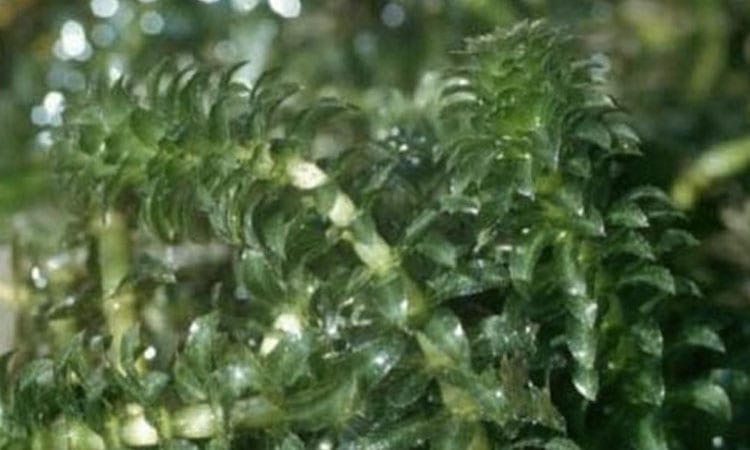Rooted, dense water weeds with slender stems and strap-like and pointed, whorly leaves – five leaves per whorl.
- English Name: Hydrilla
- Latin Name: Hydrilla Verticillata
- Propogate: Seeds, root and stem fragments
- Symptoms: Dense mat of water weeds with slender, pointed, whorly leaves
- Dangers: Most problematic aquatic plant in US, destroys fish and wildlife habitat
Hydrilla is the Godzilla of invasive aquatic weeds
Hydrilla is a noxious submerged aquatic plant that will take over a body of water. This means that it has long stems that grow to the top of the water and form tangles on the surface of the water. No body of water is immune to Hydrilla; it’s found in many types of ponds, marshes, rivers, and lakes. To identify Hydrilla, look to the plant’s leaves. The leaves of the Hydrilla are small and slightly pointed, and the branches of the plant can extend to 25 feet. It’s also the only water weed that includes tubers at its roots, making it easy to distinguish from other weeds that may look similar.
Unlike most water weeds, Hydrilla also produces flowers, which are white and very small. Hydrilla is also difficult to kill and hard to control, and the weed can exist no matter what the temperature is. It’s strong and hardy, even in the winter weather. It can also grow when there is low light available, something that not many aquatic plants can do successfully. These factors all contribute to making Hydrilla hard to deal with. Some scientists even go so far as to call Hydrilla the most damaging, destructive lake weed in the country.
It spreads through its root or stem fragments, which means all anyone has to do is catch a fragment of Hydrilla on their boat and take it for a ride to new area, where if dislodged, will begin a new infestation. The weeds also harm fish and native wildlife and plants, making it a water weed that requires permanent removal.
Controlling and Removing Hydrilla
Once you find Hydrilla in your water, the war is on. It must be completely eradicated before it does even more harm to your pond or lake. If you only see a small amount of the weed, you can use benthic barriers, such as the Lake Bottom Blanket, for control. You’ll need to use them beginning in the springtime when growth first begins, and use them throughout the summer for the best results. However, if Hydrilla has already taken over, you may need to resort to chemical methods to kill the weeds. An aquatic herbicide may be what does the trick in cases like this. Complete removal is the ultimate goal.
Whatever you do, avoid harvesting the Hydrilla or allow it to grow to its maturity. This can create an even stronger weed that will be nearly impossible to kill. Keep an eye on waterfowl, as they can carry the seeds and spread them around to other water bodies. The Hydrilla seeds can lie dormant until the time is right for growth.
Control Summary
Kill this aquatic weed at all costs! Using Benthic Barriers on small infestations for long periods of time can work, otherwise chemicals might be a better method.
If your lake has Hydrilla – do not allow boats with motors to go through the infestations. Benthic Barriers can help mat down the weed to allow for open water and reduce the chances of boat traffic fragmenting the weed.

